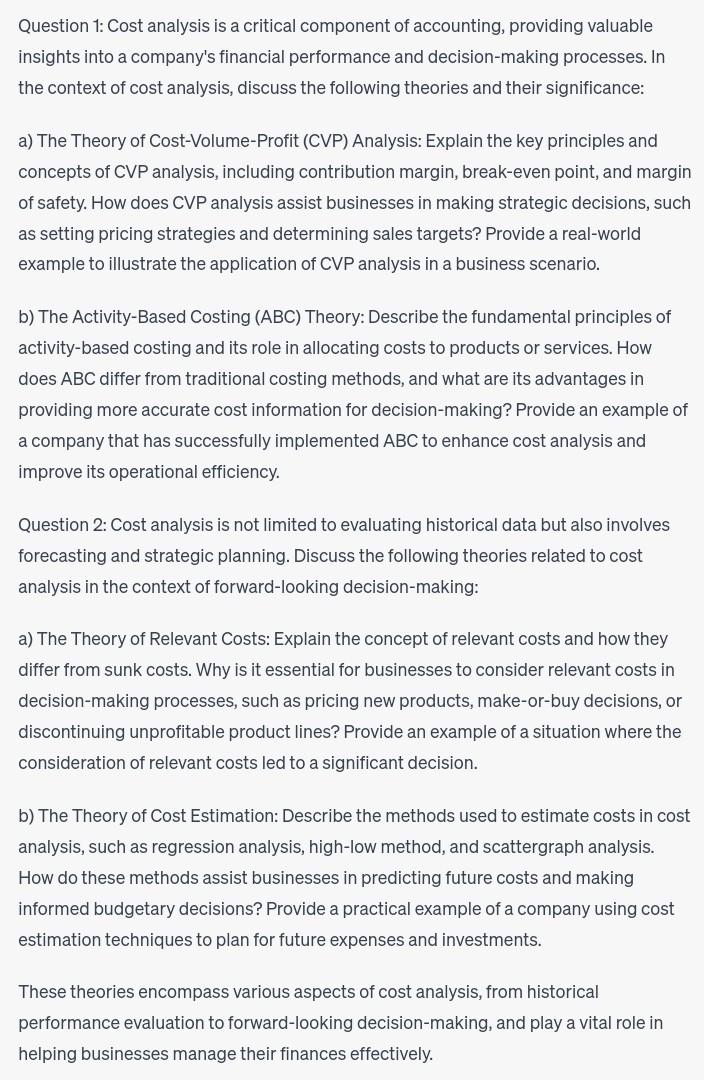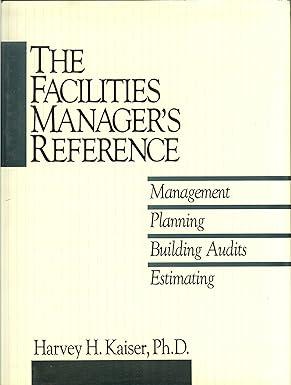Answered step by step
Verified Expert Solution
Question
1 Approved Answer
Question 1: Cost analysis is a critical component of accounting, providing valuable insights into a company's financial performance and decision-making processes. In the context of

Question 1: Cost analysis is a critical component of accounting, providing valuable insights into a company's financial performance and decision-making processes. In the context of cost analysis, discuss the following theories and their significance: a) The Theory of Cost-Volume-Profit (CVP) Analysis: Explain the key principles and concepts of CVP analysis, including contribution margin, break-even point, and margin of safety. How does CVP analysis assist businesses in making strategic decisions, such as setting pricing strategies and determining sales targets? Provide a real-world example to illustrate the application of CVP analysis in a business scenario. b) The Activity-Based Costing (ABC) Theory: Describe the fundamental principles of activity-based costing and its role in allocating costs to products or services. How does ABC differ from traditional costing methods, and what are its advantages in providing more accurate cost information for decision-making? Provide an example of a company that has successfully implemented ABC to enhance cost analysis and improve its operational efficiency. Question 2: Cost analysis is not limited to evaluating historical data but also involves forecasting and strategic planning. Discuss the following theories related to cost analysis in the context of forward-looking decision-making: a) The Theory of Relevant Costs: Explain the concept of relevant costs and how they differ from sunk costs. Why is it essential for businesses to consider relevant costs in decision-making processes, such as pricing new products, make-or-buy decisions, or discontinuing unprofitable product lines? Provide an example of a situation where the consideration of relevant costs led to a significant decision. b) The Theory of Cost Estimation: Describe the methods used to estimate costs in cost analysis, such as regression analysis, high-low method, and scattergraph analysis. How do these methods assist businesses in predicting future costs and making informed budgetary decisions? Provide a practical example of a company using cost estimation techniques to plan for future expenses and investments. These theories encompass various aspects of cost analysis, from historical performance evaluation to forward-looking decision-making, and play a vital role in helping businesses manage their finances effectively
Step by Step Solution
There are 3 Steps involved in it
Step: 1

Get Instant Access to Expert-Tailored Solutions
See step-by-step solutions with expert insights and AI powered tools for academic success
Step: 2

Step: 3

Ace Your Homework with AI
Get the answers you need in no time with our AI-driven, step-by-step assistance
Get Started


